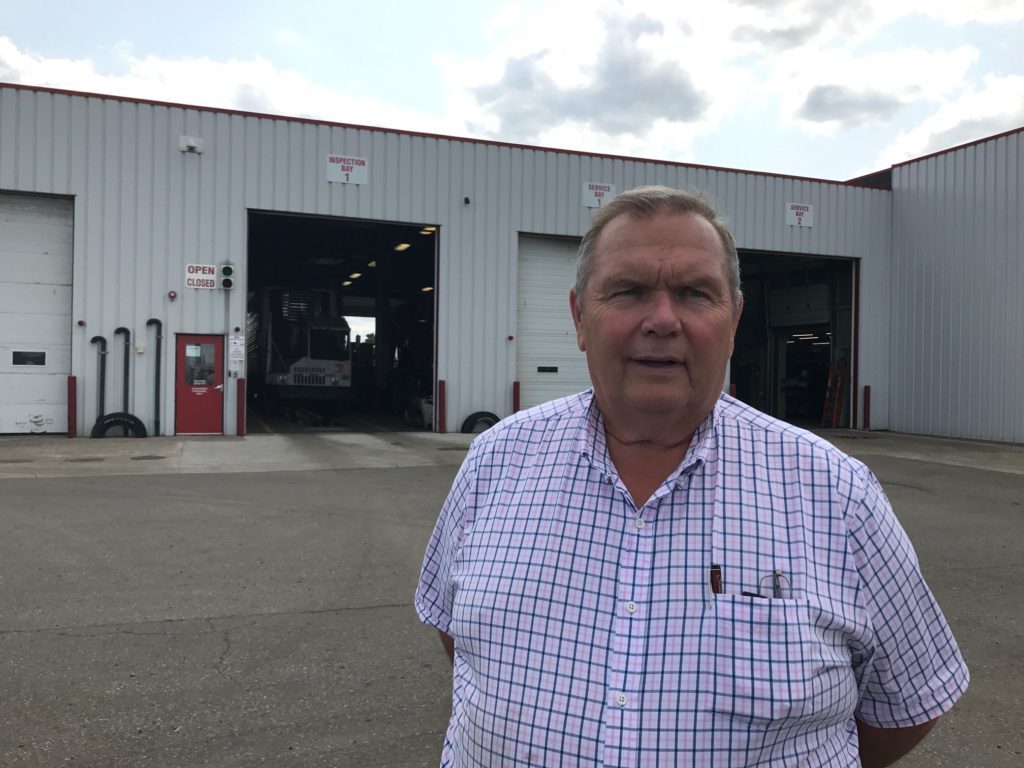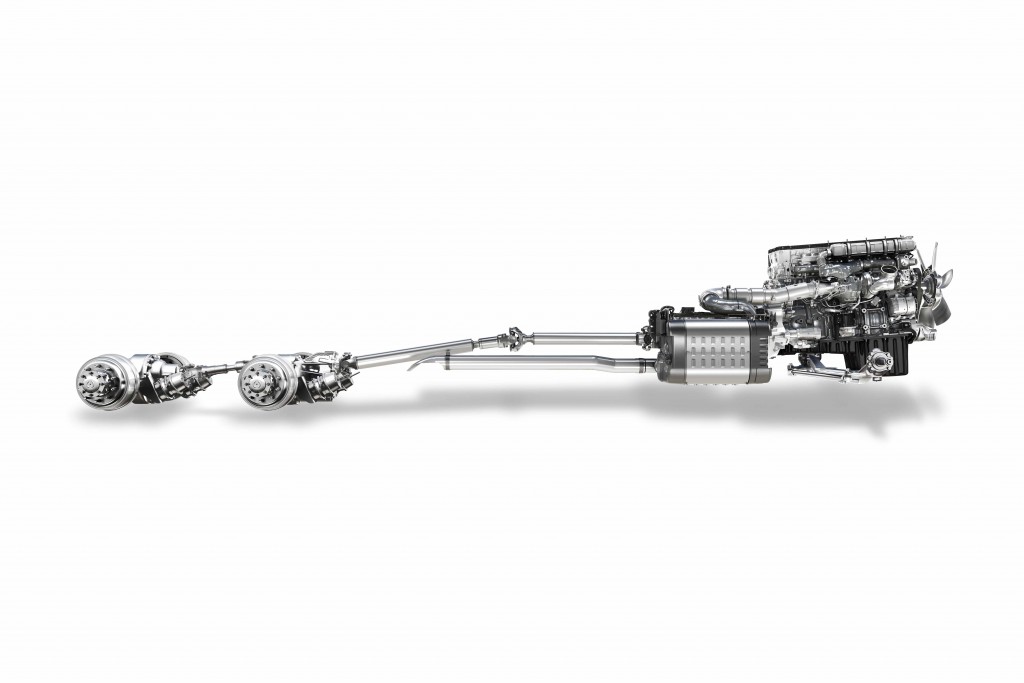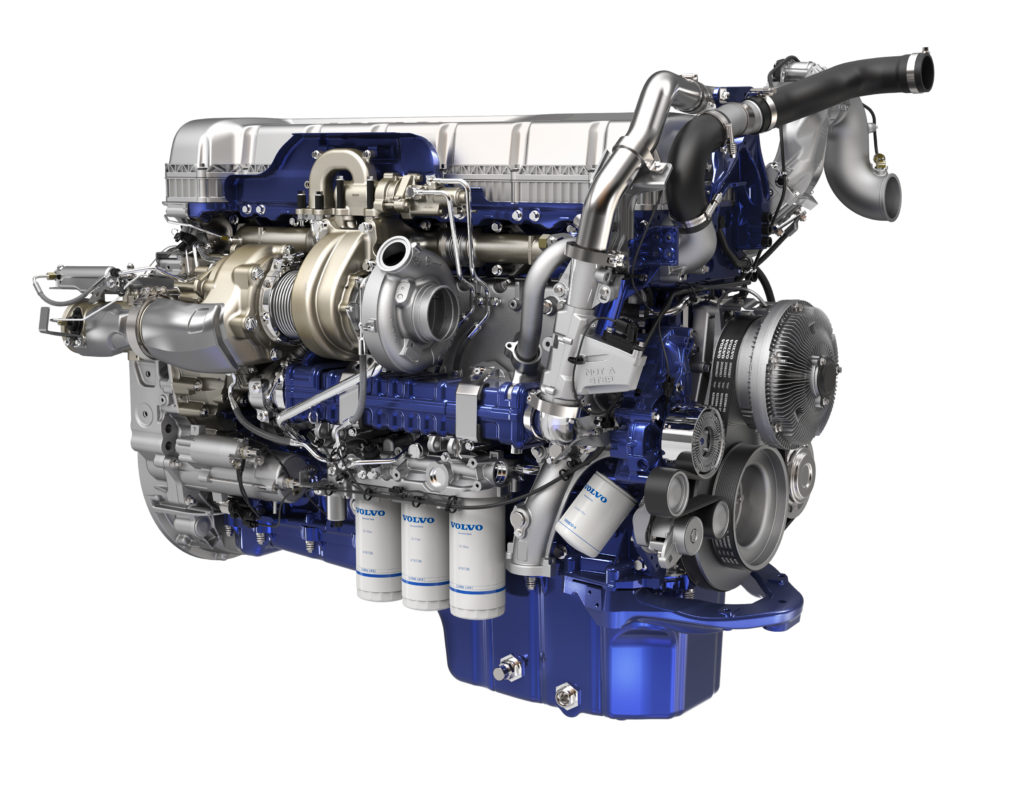Don’t get stuck in your spec’
Spec’ing the right powertrain for your fleet’s application often equates to a tug-of-war between various priorities. Do you spec’ for efficiency, but sacrifice performance and risk aggravating drivers? Or do you choose lightweight components, maximizing payload but possibly threatening durability?
Maybe you give drivers the highest-performing spec’ you can build, but what will the operating costs be over the life of the truck? For large fleets, standardization may be a priority, so they can more easily slipseat drivers and simplify their parts inventory. But a standard fleetwide spec’ doesn’t allow room for optimization by route or duty cycle.
“It is really all of those, adding over-the-road support,” said Jim Pinder, corporate fleet manager with Erb Group, when asked how he prioritizes consistency, fuel efficiency, and performance. “Oh, and warranty coverage. Oh, and gross weight as well.”
Revisit the spec’
One of the biggest mistakes a fleet can make is to continue spec’ing trucks the way they always have, just because that’s always how they’ve always done it. Fleets that are still spec’ing trucks the way they did five to 10 years ago are almost certainly missing out on easy opportunities to improve performance and efficiency.
“We recently revisited a spec’ with a fleet that was stuck in the spec’ they used for the previous decade,” said Dan Bouliane, territory account executive for the B.C. Interior and Yukon for Cummins. “It was a heavy-haul fleet and they would traditionally spec’ a 3.91 axle ratio. We revisited it using our electronic tools and calculations and we stepped them down to a 3.72 axle ratio. Overall cruise speed was reduced and the customer saw enhanced fuel economy from this change.”

Those discussions are not always easy to have with fleets that are comfortable with their traditional spec’.
“It’s definitely a challenge,” said Bouliane.
Johan Agebrand, director of product marketing with Volvo Trucks North America agrees that fleets need to re-evaluate their spec’ing procedures as technologies advance.
“With the changes in engine technology, the spec’ you had five or 10 years ago is not going to be what can get you the most efficient operation today.”
For example, a fleet that’s taking advantage of downspeeding will need to refine its rear axle ratios, and one that’s deploying more aerodynamics can dial down engine power since the truck has less wind resistance to overcome.
“It’s very important to revisit your traditional spec’s and have an open discussion with your dealer or sales rep to understand your application and see if the technology is still relevant for the job at hand,” said Agebrand.
Even a seasoned pro like Pinder heeds this advice.
“We are looking more at the data being produced in the maintenance system we implemented for trends in reliability and failures, and we are in constant touch with our local dealers as well as the OEM on changing core specifications and option availability,” he said.

(Photo: James Menzies)
How slow can you go?
One of the biggest advances in powertrain spec’ing over the past decade has been downspeeding – essentially spec’ing faster rear axle ratios to lower engine rpm at highway speeds, reducing fuel consumption.
“When you downspeed an engine, you go to the left in the torque curve, which decreases horsepower,” explained Agebrand.
Volvo countered this horsepower loss by adding turbocompounding as an option on its D13 to increase torque. While many longhaul fleets are maximizing the benefits of downspeeding, Agebrand said many applications have an untapped opportunity at hand, including regional haul and vocational fleets, which “with some changes to engine technology can still utilize downspeeding in a bigger way.”
Right-sizing the engine
The argument between big and small displacement won’t be settled anytime soon. That’s because both big bore and smaller displacement engines have their place.
“You don’t want an engine that is too [heavy], because that is inefficient, and you don’t want an engine that goes too hard, because it will wear out,” reasoned Agebrand.

In Canada, the 15-liter engine has remained a mainstay, even while the trend in the U.S. has been towards smaller displacement engines. The 13L offers weight savings but in applications where weight is not the primary consideration, Christoph Horn, fleet account executive with Cummins, rhymes off several advantages of a big bore engine: “Reliability, fuel economy, longevity, a stronger engine brake – particularly with heavier loads – and elevated resale value.”
One of the most common spec’ing mistakes Cummins sees among Canadian customers is not a new one.

“When fleet owners select the incorrect horsepower or torque rating for the routes or loads they encounter,” said Bouliane. “As a result, they can end up in either an underperforming powertrain with poor driver satisfaction, or on the flip side excessive fuel consumption and an elevated total cost of ownership.”
Most recently, fleets looking to attract drivers with a premium-spec’d truck are leaning towards too much power, Bouliane added.
Tap OEM and driver expertise
Truck manufacturers and dealers are equipped with some of the most powerful and effective tools available to determine the right spec’ for any given application. To ignore their help, which comes free of charge, is foolhardy.
“I feel it is truly a 50-50 relationship, where the chassis and component OEMs supply detailed computer-generated performance graphs, setting recommendations on the vast array of engine operational options and feedback they have from other fleets,” said Pinder. “We also speak with our driver group for their experiences in the many different environments our equipment operates in, as basically, we go anywhere food is produced or consumed.”
Cummins uses its PowerSpec web tool to calculate the right spec’ and other OEMs have their own tools available. If additional help is needed, the OEM and dealer have additional expertise to share at no charge.
“We suggest that before a fleet purchases a new truck, they consult with an expert at the dealer or a corporate representative to see what has changed since their last truck purchase,” Horn said.
What’s next?
While the widespread arrival of electric trucks will forever change the spec’ing process – battery capacity, charging time and range will replace discussions of engine horsepower and transmission ratios – there’s more work to be done on the diesel front.

“No, diesel has not tapped out,” Agebrand said, when asked if diesel efficiency has reached its limit. “Further gains are surely possible.”
He said most will come from further enhancements to in-cylinder combustion and aftertreatment system efficiency.
“We learn every day about raw materials, and how we can stress them without breakage,” he added. “It won’t be a revolutionary step, as diesel is a mature technology. I think we’ve increased efficiency about 15% over the last 15 years, which seems like a slow pace when you consider electric engines. Eventually, we’ll have a transition to electric and fuel cell, but for now we continue to explore all we can with diesel technology.”
Have your say
This is a moderated forum. Comments will no longer be published unless they are accompanied by a first and last name and a verifiable email address. (Today's Trucking will not publish or share the email address.) Profane language and content deemed to be libelous, racist, or threatening in nature will not be published under any circumstances.